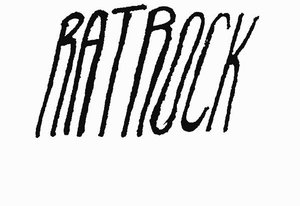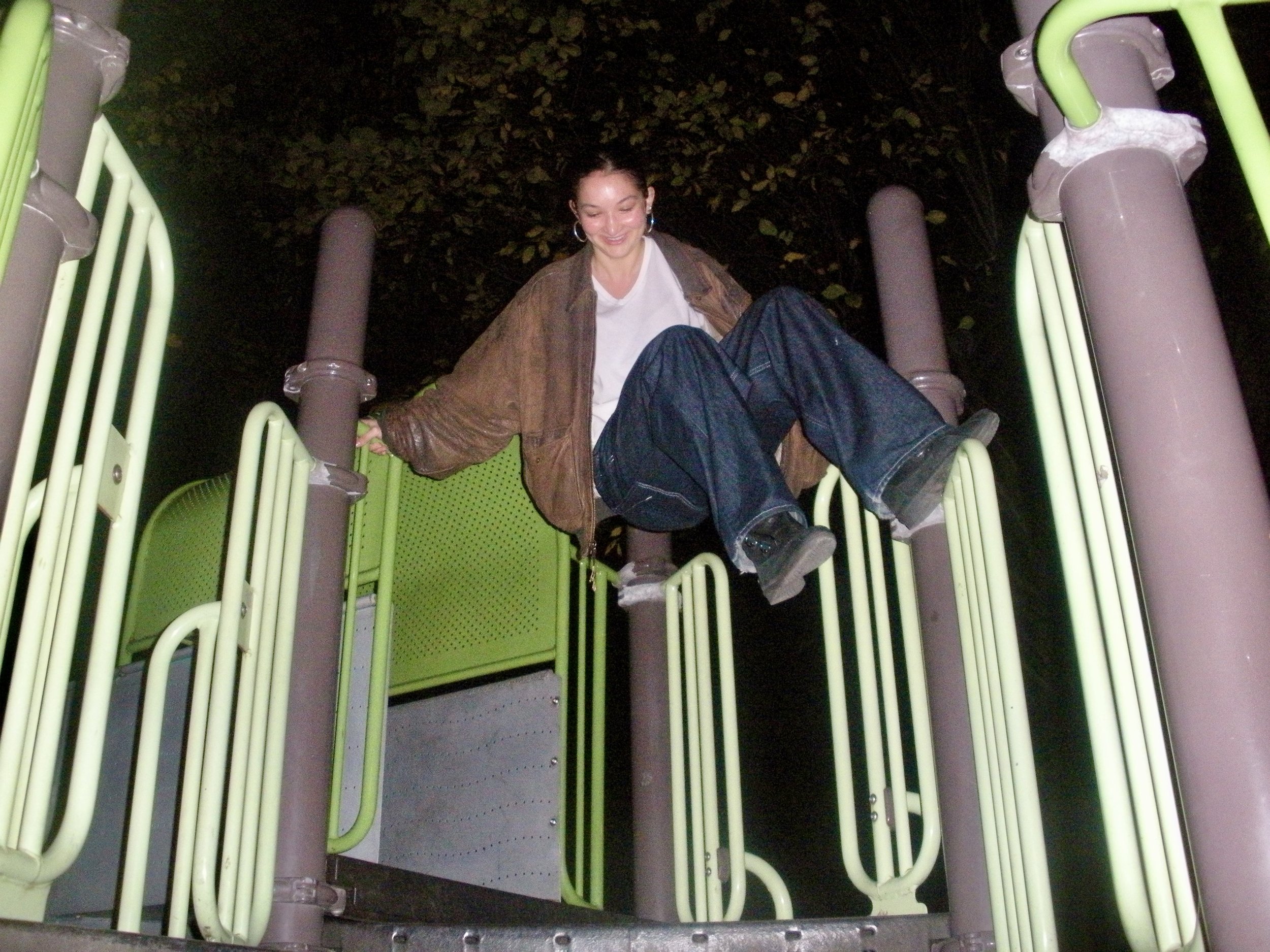Feature by Caroline Nieto
Photos by Colson Struss
Celeste Funari Muse is a visual artist and collage marker. She is currently a senior (class of 2025) at Columbia College pursuing a degree in archaeological anthropology.
You could say Celeste Funari Muse is a born artist. Raised by two artist parents—her father a photographer and collage artist and her mother a documentary filmmaker—art was less of a conscious undertaking than a way of life. In middle school, Celeste began keeping a journal, writing down thoughts and drawing self portraits “as a way of thinking about what it meant to be a human being in a body, because that felt really confusing at the time.” Since then, she has journaled not daily, not compulsively, but whenever she needs to translate a feeling. Over the past decade, Celeste has collected memories not just as a salve for the immediate, but in her words, as a “sacred way of preserving how I think and how I move through the world.”
Embrace I, Risograph
Celeste has used and replaced the same black spiral-bound journal for ten years. Recently she’s added something new to the rotation: a red pocket-sized journal with blank pages. This book houses Celeste’s most routine practice: drawing strangers on the Subway. While conceiving these images, Celeste is beholden to the time before she or her subjects reach their respective stops, and it is the thought that these people could leave at any moment that draws her to the page. Her perspective as an onlooker isn’t detached from the drawings, where the subjects are obscured by poles or face away from her view. Celeste calls this transient bond “an intimate form of connection in a city where connection isn’t expected.” For quick sketches like these, Celeste works exclusively in linework, depicting only the sparsest details to identify her subjects. While the drawings are minimalist in composition, Celeste sees their sparseness as an asset, where “a single line [creates] an image [...] that allows your mind to fill in the rest. “It’s choosing one thing to focus on and letting the rest fall away,” imagining what might live in the space.
People are what fuel and form all of Celeste’s work. While her parlay into art began as a means of self-investigation, Celeste now turns that inquisition outwards, where each person she meets, or even briefly encounters, adds to her well of inspiration. Given her history as an artist, art school might have seemed like the natural trajectory, but her fascination with the human experience led her to pursue a degree in anthropology, which has given her “a way to talk about art and film and culture without pigeonholing [herself] too early into one skill.” Celeste has found that academia, especially the humanities, can often get caught up in erudition without action; she felt compelled to balance her major with something that felt more tangible. She chose to concentrate in archaeology, a program that allows her to get her hands dirty and feel the “material action that is changing the way we think about history.”
Opening, Risograph
This desire for the mind/body connection has its roots in Celeste’s history as an athlete: “I feel like in a similar way to finding myself through portraiture at a pivotal age, I found myself through movement and athletics.” Celeste’s art reflects this emphasis on physicality, which is difficult when drawing or working with collage, two mediums beholden to their inertia. Stilling bodies in action seems hypocritical, but Celeste considers it a welcome challenge, if not to improve her skill, but to feel “a point of connection between what have been two disparate pulls of expression for [me].” She creates the illusion of movement in her collages through texture, layering, and visual intrigue, attracting the eye to details that seem to contradict. Her collage “Aperture/Capture” features images of armchairs, two men holding a camera, and the blown up image of what appears to be a belly button, to state a few. These fragments of the physical create enough visual dissonance to keep the eyes from landing in one place, giving the experience of a moving image.
Aperture : Capture, Risograph
Where her drawings are often spontaneous creations, Celeste’s collage work is a more labored process, in which she slowly discovers patterns and images as they appear to her. Celeste finds pictures from magazines of contemporary art or photography, taking her scissors to anything that stands out. Typically, the final product comes from a night spent on her bedroom floor, images splayed about and glue on hand. Recently, Celeste has taken to sewing her collages, stitching directly onto the paper. What is left is evidence of her interference, a literal weaving together of discordant parts into an entirely new picture, forming “some kind of scene or reality that didn’t exist before.” Her collage, “Weapon Study,” is made of two images—a woman curled up and naked, gun in hand; and the roots of a tree in a forest. The images are sewn together such that the woman's bottom is overlayed with the slope of vacant space above the tree. What remains is the omnipresent reality of nature, a reminder of where our lives begin and end.
Weapon Study, Risograph
Celeste graduates this Spring, and she’s ready to live at a slower pace. She looks forward to making art with deliberation, not out of dissatisfaction with her previous work, but from curiosity at what this change will do to her expression. She plans to stay in New York, visit Italy in the fall, and work for a few years before going back to school. She doesn't feel the pressure to stick to a severe timeframe—or if she does, she doesn’t show it. Celeste dictates her pace through an internal rhythm, with the knowledge that no matter what, she will never stop moving.







































